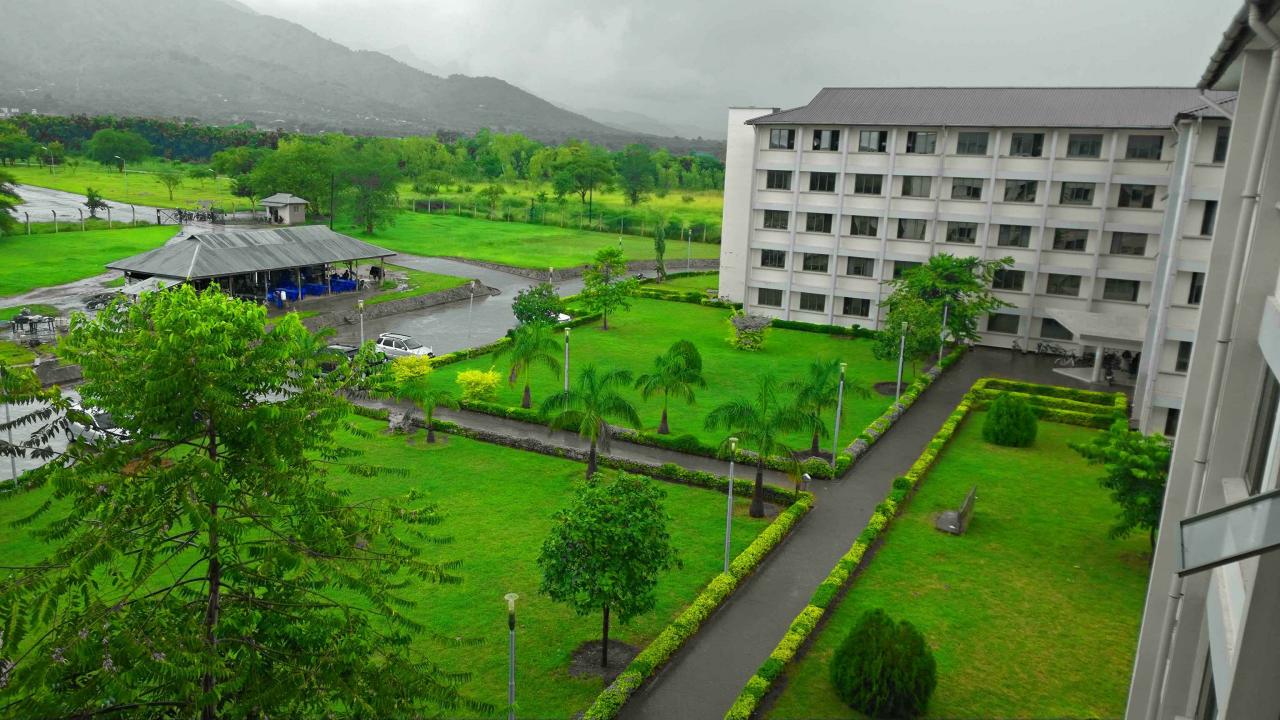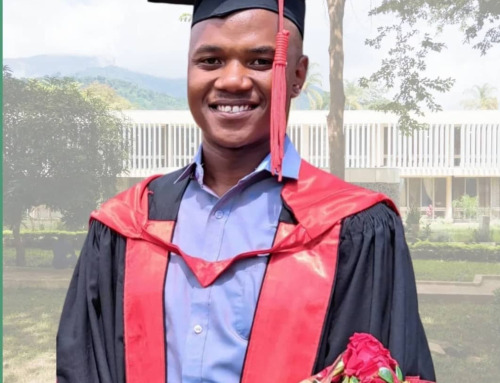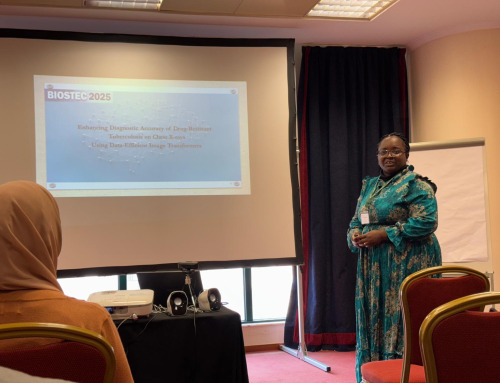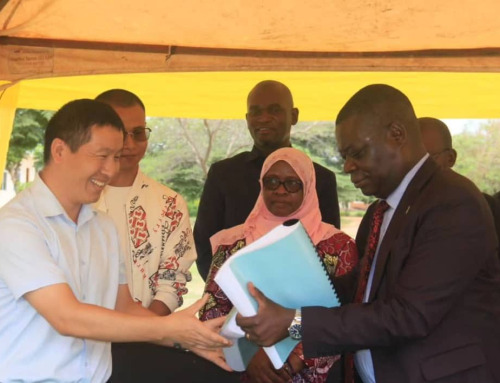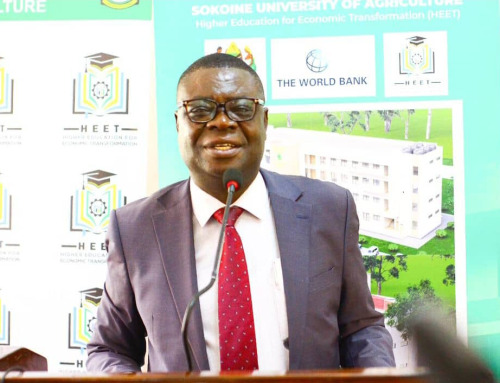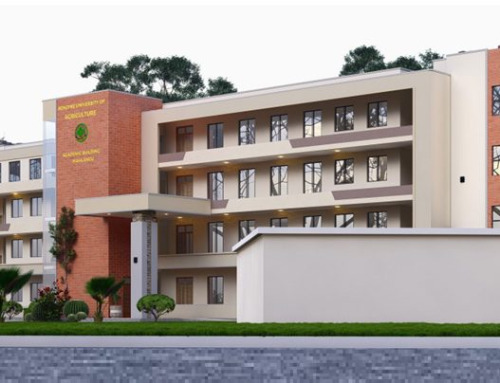EXECUTIVE SUMMARY
- Introduction
Sokoine University of Agriculture (SUA), established in 1965 as an Agricultural College, has evolved into a leading public university specializing in agriculture, forestry, and veterinary sciences. Originally offering diploma training, it transitioned to a Faculty within the University of Dar es Salaam in 1970, expanding its scope to bachelor’s degrees. The inclusion of forestry and veterinary science led to successive name changes, culminating in its current designation as SUA in 1984 in honor of the former Prime Minister, Edward Moringe Sokoine. Operating under its Charter and Rules, which were signed on 28th March 2007. The Charter and Rules were amended and published on 28th August 2020 as Government Notice No. 683.
Sokoine University of Agriculture’s Edward Moringe Campus offers a robust academic environment with four prominent faculties (Agriculture, Veterinary Medicine, Forestry and Nature Conservation) providing 27 undergraduate programs and numerous postgraduate options in diverse disciplines related to agriculture, animal science, wildlife, forestry, and rural development. While the campus excels in academic offerings, its infrastructure faces the challenge of insufficient and outdated buildings. These limitations negatively impact the effectiveness of teaching, research, and inclusivity.
Addressing these infrastructure shortcomings necessitates a comprehensive renovation and modernization plan. This plan should aim to equip the campus with facilities that meet contemporary academic needs, support advanced research, and ensure accessibility for all users. Modernization efforts should focus on incorporating technologies, addressing space limitations, and improving the structural integrity of older buildings. By investing in its infrastructure, Edward Moringe Campus can solidify its position as a leading center for agricultural and environmental education and research in the region.
To address this, SUA, Edward Moringe Campus has received financial support from the
World Bank (WB) for Higher Education for Economic Transformation (HEET) Project (P166415). The HEET project is supported by the Government of the United Republic of Tanzania (GoT) through the World Bank. The main Project Development Objective (PDO) is to strengthen the learning environments and labour market orientation of programs in priority disciplines and the management of the higher education system. Hence, an Environmental and Social Impact Assessment (ESIA) is thus deemed mandatory to identify, predict, and evaluate these impacts and develop mitigation measures for project sustainability.
This ESIA adheres to the Environmental Management Act of 2004 (Tanzania) and its regulations, mandating a full EIA study for projects of this nature. Additionally, the World Bank’s Environmental and Social Framework (ESF), Safeguarding Policies, and Environmental and Social Standards (ESSs) as well as the project’s Environmental and Social Management Framework (ESMF) provide guiding principles for addressing potential social and environmental risks associated with investment projects.
In particular, ESS1 stipulates requirements for Borrowers regarding impact identification, assessment, and mitigation measure development.
SUA has comprehensively prepared and submitted ESIA application documents to the National Environment Management Council (NEMC). These documents encompassed a Scoping Report and Terms of Reference (ToR), complying with the Environmental Management Act, 2004, its regulations, and the World Bank’s ESF (ESMF, POM, ESCP,
SEP, LMP). Following NEMC’s project registration and allocation of Project Reference No.
EC/EIA/2023/4367. This ESIA has been undertaken based on the established guidelines and aims to ensure responsible and sustainable project implementation while minimizing any adverse environmental and social impacts.
In addition, the contractor is required to adhere to the Wage Order (2013) of the Labor Institution, ensuring payment in accordance with relevant labour laws to prevent conflicts during the construction phase. Draft contracts must be collaboratively prepared by the Contractor and the client, gaining approval from the WB and Labour Officer. Additionally, the contractor has been provided with the laws outlined in POM 2021 to prevent the involvement of child labour.
- Project Description
The Edward Moringe Campus construction and rehabilitation project, funded by the World Bank through the Higher Education for Economic Transformation initiative (USD 5,972,130.29), will be completed within 18 months. Key construction elements at the SUA Edward Moringe Campus include a four-story Innovation Center (1100 m2 per floor), a threestory academic building (1400 m2 per floor), and three single/double-story laboratories (tissue culture, biosecurity, animal reproduction, and gross anatomy). Rehabilitation will focus on the administration block (including a lift for accessibility), engineering classrooms (transforming one into a lab), and refreshing offices and lecture rooms (roofing, ceilings, electrical systems, toilets, painting, doors, and windows). This comprehensive approach aims to enhance the campus’s infrastructure and support its educational and research activities.
- Project main activities
Activities under this proposed project will be implemented in four phases namely Mobilization construction, demobilization, and operation and maintenance phases.
The Contractor will also employ more skilled and unskilled workers. Skilled Labour will include engineers, technicians, foremen, etc. Contractor shall comply with all relevant laws as guided by the Constructor Registration Board (CRB); Engineers Registration Board (ERB) and Architect and Quantity Survey Registration Board (AQRB) as well as NEMC (EMA 2004, Environmental Impact Assessment and Audit 2015 with its amendment of 2018 and World Bank requirement (ESF, ESMF) as well as relevant international laws on construction, safety and climate change
- Project Location
The proposed project site will be located at the Edward Moringe Campus of Sokoine University of Agriculture, which is located in Magadu ward, Morogoro Municipality,
Morogoro Region. Edward Moringe Campus is situated 3 km South of Morogoro Municipality, and it shares boundaries with the Morogoro Mindu Dam on the southern side, Lugala village on the North – West side and Morogoro CBD on the North- Eastern side.
- Legal Frameworks
There are a number of policies and legislations set out the legal and regulatory requirements which are relevant to the proposed project at SUA. Additionally, there are pertinent standards governing environmental management and protection, health and safety. Relevant policies and legislations pertaining to development of the project mainly environmental management in terms of quality, health and safety, pollution of ground and surface water, pollution of soil, land and land use control among others, were examined to ensure that the proposed development project meets and abides by these regulations.
The policies and legal frameworks include
- Environmental Management Act No. 20 of (2004), Cap. 191
- The Water Supply and Sanitation Act No. 12 of 2009
- Land Act no 4 (1999)
- The Urban Planning Act (2007)
- Occupation Health Safety (2003)
- Employment and Labour Relations Act No. 6 of 2004
- Engineers Registration Act and its Amendments 1997 and 2007
- The Contractors Registration Act (1997)
- The Architects and Quantity Surveyors Act (1997)
- The HIV and AIDS (Prevention and Control) Act of 2008
- The Local Government Laws (Miscellaneous Amendments) Act (1999)
- The Tanzania 2025 Development Vision
- Environmental Impact Assessment and Auditing (amendment) Regulations (2018)
- The National Health Policy of 2008;
- The Tanzania 2025 Development Vision
- The Employment and Labour Relations Act No. 6 of 2004
Also, the Environmental Impact Statement has assessed the general compliance with the following regulations and guidelines; The Tanzania Development Vision 2025, The Environmental Management (Environmental Impact Assessment and Audit) (Amendment) Regulations 2018, The Environmental Management (Air Quality Standards) Regulations, 2007, The Environmental Management (Soil Quality Standards) Regulations, 2007, The Environmental Management (Water Quality Standards) Regulations, 2007 and The Environmental Management (Standards for Controls of Noise and Vibration Pollution) Regulations, 2015
Furthermore, this ESIA study has complied with the World Bank Environmental and Social Framework which supports green, resilient, and inclusive development by strengthening protection for people and the environment and making important advances in areas such as Labour, inclusion and non-discrimination, gender, climate change, biodiversity, community health and safety, and stakeholders’ engagement. The following are six (6) out of 10 Environmental and Social standards of the World Bank which are relevant to the project;
- ESS1: Assessment and Management of Environmental and Social Risks and
Impacts.
- ESS2: Labour and Working Conditions.
- ESS3: Resource Efficiency and Pollution Prevention and Management.
- ESS4: Community Health and Safety. ESS8: Cultural Heritage. vi. ESS10: Stakeholder Engagement and Information Disclosure
- Baseline Information
The project site is within the area characterized by sandy clay loams and sandy clay soils, different natural vegetation i.e. (short and long grasses), tree species, and artificial tree species cover the surface land. No sensitive ecological sites are found near the proposed sites. The general area is characterized by flat alluvial plains with homogenous sedimentation pattern and the specific area has a largely flat topography and gentle slope. About three quarters of total land at SUA constitutes undeveloped land. This undeveloped land currently is used for farming activities and is suitable for construction of all kinds of development required in spatial expansion of SUA. Hence, the proposed establishment under HEET project will be done at the least developed area.
Additionally, the project site is very accessible to social services including road networks, water supply and electrical supply from TANESCO. Financial services like Mobile money and bank services are available at Edward Moringe Campus and surrounding communities so during construction and operation phase, the Labours who will be working at Solomon Mahlangu Campus will assess all services easily. Also, in Solomon Mahlangu Campus there is a hospital which will be used for health services during construction and operation phase.
- Stakeholder Engagement
The SUA Edward Moringe Campus project prioritizes robust stakeholder engagement, adhering to Tanzanian EIA regulations, World Bank ESS10, and UNDP guidance. Public consultations effectively facilitated information sharing, identifying key concerns, and fostering community relationships. Stakeholder identification considered each group’s relevance, influence, and potential impact from the project. This ESIA has undertaken extensive stakeholder consultations to ensure responsible development and minimize potential social impacts. Consultations involved all individuals or groups potentially affected by or affecting the project, positively or negatively.
A comprehensive Stakeholders Engagement Plan (SEP) outlines engagement strategy for both national and sub-national actors, with emphasis on the latter. The SEP details engagement activities required throughout project phases. Notably, the project embraces inclusivity by consulting with women, vulnerable groups, and people with special needs. Continuous engagement aims to gather diverse perspectives throughout the project lifespan. Additionally, grievance mechanisms address Gender-Based Violence (GBV), Sexual Exploitation and Abuse (SEA), and Sexual Harassment (SH).
Engagement occurred at multiple levels: o Zonal Level: Occupational Safety and Health Authority (OSHA) o Regional Level:
- Sokoine University of Agriculture (Staff, Students, and Service Providers)
- Morogoro Fire and Rescue Force
- Wami/Ruvu Basin Water Bodies (WRBWB)
- TANESCO (National electric utility)
- Morogoro Municipal Council o Local Level:
- Ward Executive Officer (WEO) from Magadu ward
- Street/Mtaa Executive Officers (MEO)
- Community members from Magadu ward
- Impact Assessment and Identification of Alternatives
The impact assessment conducted throughout the project lifecycle at SUA shows potential environmental effects across various project phases. For instance, during the mobilization phase, machinery movement may lead to soil compaction and disturbance, affecting vegetation and drainage. Construction noise, dust, and disruption could impact the surrounding communities along the project boundaries. Sediment runoff from excavation may harm aquatic ecosystems, while emissions might contribute to air pollution.
In the operation phase, water consumption for laboratories could strain local sources, impacting aquatic life and communities. Continued emissions into air and water could pose ongoing concerns. Closure demands proper waste disposal to prevent soil and water contamination. Effective monitoring, waste management, and community involvement are essential for sustainable outcomes.
As part of the Environmental and Social Impact Assessment (ESIA) report, potential alternatives are explored to mitigate these impacts and promote responsible development.
An Outline Summary of Associated Impacts of the Proposed Project:
The Edward Moringe Campus project’s assessment of environmental and socio-economic impacts adheres to a rigorous framework incorporating diverse elements:
Environmental Impacts:
- World Bank Environmental Health and Safety Guidelines (EHSGs): serve as the primary benchmark for evaluating potential environmental risks and impacts associated with project activities.
- Climate Change Considerations: incorporate the project’s potential vulnerability to climate change effects and strategies for building resilience.
- Habitat and Biodiversity Protection: address potential threats to natural habitats, biodiversity, and ecosystem services, emphasizing protection, conservation, maintenance, and restoration.
- Resource Utilization: carefully assess the project’s impact on living natural resources and prioritize sustainable resource management practices. o Physical Facility Design: evaluate the environmental implications of facility design decisions to minimize negative impacts.
Socio-Economic Impacts:
- Human Security: investigate potential threats to human security through crime, violence, or social unrest triggered by project activities. o Access to Social Services: assess potential for project-related disruptions to access to essential services like education, healthcare, and water supply, aiming to mitigate any adverse effects.
- Child Labour: ensure strict adherence to national and international regulations prohibiting child labour, with zero tolerance for any violations.
- Gender Equity: promote inclusivity and address potential risks of gender discrimination during project implementation and beyond.
- Vulnerability and Disadvantage: ensure equitable distribution of project benefits and actively avoid disproportionate negative impacts on vulnerable individuals or groups.
Impacts associated with the proposed project.
- Physical environmental Impacts
Positive environmental impacts
- Increase physical outlook of the new modern buildings and student’s hostel
- Improved waste management from the existing that will be integrated into new facilities.
- Will improve safety in university environments such as walkways, road lights and assembly points.
Negative environmental impacts
- Vegetation clearance
- Impact on climate change
- Generation of solid waste
- Generation of liquid waste (human sanitary waste)
- Soil and water quality contamination
- Noise nuisance and Vibration
- Soil erosion
- Air pollutions (fugitive dust and exhaust emissions)
- Generation of hazardous waste
- Impacts on Social Environment
Positive social impacts
- Employment opportunities
- Increase income to community around project site
- Benefit to local suppliers of construction materials
- Increased human capital
- Increase students’ admission to university
- Increase of revenue to SUA
- Production of skilled labor force for nation development
- Increased commercial and social activities around project locations
- Increased revenues to local authorities
Negative social impacts
- Population influx (labour influx)
- Increased risk of Gender Based Violence (GBV), Sexual Exploitation and Abuse
(SEA) and Sexual Harassment (SH) iii. Disruption of traffic Flow iv. Occupational health and safety hazards to workers
- Possible Spread of HIV/AIDS, COVID-19 and other infectious diseases. vi. Child labour and forced labour
- Unplanned pregnancies
- Risk of construction materials vandalism
- Public health hazards due to wastes
- Mitigation Measures
The SUA Edward Moringe Campus project prioritizes responsible development by implementing a comprehensive suite of mitigation measures addressing identified environmental and social impacts, as dictated by ESS1’s mitigation hierarchy. These measures proactively tackle potential challenges and negative consequences associated with construction activities and subsequent campus modifications. Key strategies encompass environmental safeguards like noise and dust control, traffic management, local ecosystem protection, and waste management. Social safeguards include worker safety, accessibility enhancements, and gender-sensitive approaches interwoven into project planning. This multipronged approach ensures optimal project execution while minimizing potential social and environmental repercussions. Further details on specific impacts and corresponding mitigation measures are provided in Table 7.1 of Chapter 7.
- Environmental and Social Management Plan (ESMP)
This report introduces impactful strategies designed to address the recognized adverse social and environmental effects. These strategies, alongside a comprehensive monitoring plan, are extensively outlined within the ESMP (Environmental and Social Management Plan). A significant number of these measures are in line with established engineering and social norms. The ESMP distinctly clarifies the roles and responsibilities of the key stakeholders engaged. During the construction phase, the contractor and SUA will primarily oversee implementation. As the project advances, SUA will transition to a pivotal role in executing the mitigation actions. The estimated total cost for these environmental and social mitigation measures (ESMP) is approximately TZS 339,000,000.
- Environmental and Social Monitoring Plan (ESMoP)
The SUA Edward Moringe Campus construction and rehabilitation project adheres to a comprehensive environmental and social monitoring plan encompassing four key activities:
- Baseline Monitoring: Establishes pre-construction environmental and social conditions to measure project impacts against.
- Impact Monitoring: Tracks project-related environmental and social changes throughout construction and operation.
- Compliance Monitoring: Verifies adherence to regulatory requirements and mitigation measures outlined in the project’s Environmental and Social Management Plan (ESMP). o Mitigation Monitoring: Assesses the effectiveness of implemented mitigation measures and triggers corrective actions if necessary.
During construction, a dedicated Contractor’s safeguard team comprised of environmental, social, and safety experts will oversee monitoring activities, with supervision from the
Consultant’s safeguard team. Upon project completion, monitoring responsibility will shift to SUA Edward Moringe Campus for sustained environmental and social performance. Independent oversight will be provided annually by OSHA and/or NEMC through Environmental, Health, and Safety (EHS) reviews. The estimated cost for implementing this comprehensive monitoring program is TZS 126,000,00
Cost Benefit Analysis
This project’s Environmental Impact Statement (EIS) conducts a rigorous cost-benefit analysis, meticulously evaluating both its potential advantages and disadvantages. This integrated approach not only identifies and minimizes any environmental concerns the project might introduce, but also maximizes its positive social and economic contributions. While acknowledging the project’s potential for financial and societal benefits, the EIS prioritizes environmental responsibility by ensuring that remediation costs represent a minimal fraction of the overall project budget. This commitment to minimizing environmental impact while maximizing beneficial outcomes underscores the project’s dedication to responsible development.
- Decommissioning
This is the final demise of the buildings and services use value. The decommissioning entails demolition of the structures and other appurtenances. However, with regard to this type of project no recent closure plan can prompt decommissioning as this project operation has a much longer life span.
- Summary and Conclusion
14.1 Summary
SUA Edward Moringe Campus is embarking on a transformative development plan focused on establishing essential facilities and enhancing existing infrastructure. This strategic initiative, designed to bolster the university’s academic standing and research capabilities, encompasses: o New Construction:
- Academic Building: offering modern learning and research spaces with a focus on sustainability.
- Innovation Center: serving as a vibrant hub for technological advancement and entrepreneurial spirit.
- Specialized Laboratories: including Animal Reproduction and Biotechnology, Gross Anatomy, Tissue Culture, and Biosecurity, equipped with cutting-edge technology.
- College of Economics and Business Studies (CoEBS) Expansion: providing contemporary classrooms, lecture halls, and collaborative areas.
➢ Renovation and Upgrading:
- Lecture theatres within the administration building and School of Engineering.
- Creation of a Pasture Laboratory.
- Installation of a lift shaft at the administration building, enhancing accessibility.
This comprehensive plan embodies a commitment to both modernization and heritage preservation. New facilities embrace contemporary design principles and advanced technology, while renovations breathe new life into existing structures. At its core, the initiative aims to:
- Enhance the learning environment for students and faculty.
- Foster innovation and research activities. iii. Promote sustainable practices within the campus infrastructure. iv. Ensure accessibility for all users.
Through this HEET Project execution, SUA reaffirms its dedication to academic excellence, pioneering endeavours, and responsible growth, solidifying its position as a leading educational and research institution in the region.
14.2 Conclusion
These outlined plans underscore Sokoine University of Agriculture’s strong commitment to overall progress. The proposals for the academic Building, Innovation Center, laboratories, and the College of Economics and Business Studies (CoEBS) Academic Building reflect the university’s aim to modernize its facilities, foster innovation, improve learning experiences, prioritize environmental care, and ensure sufficient resources for all.
These significant changes will position Sokoine University as a frontrunner in quality education and innovative ideas. The plans also emphasize inclusivity, gender equality, and safety on the Edward Moringe Campus in Morogoro. The proposed improvements to key structures like the Administration Block and Engineering lecture rooms highlight Sokoine University’s active commitment to advancement.

